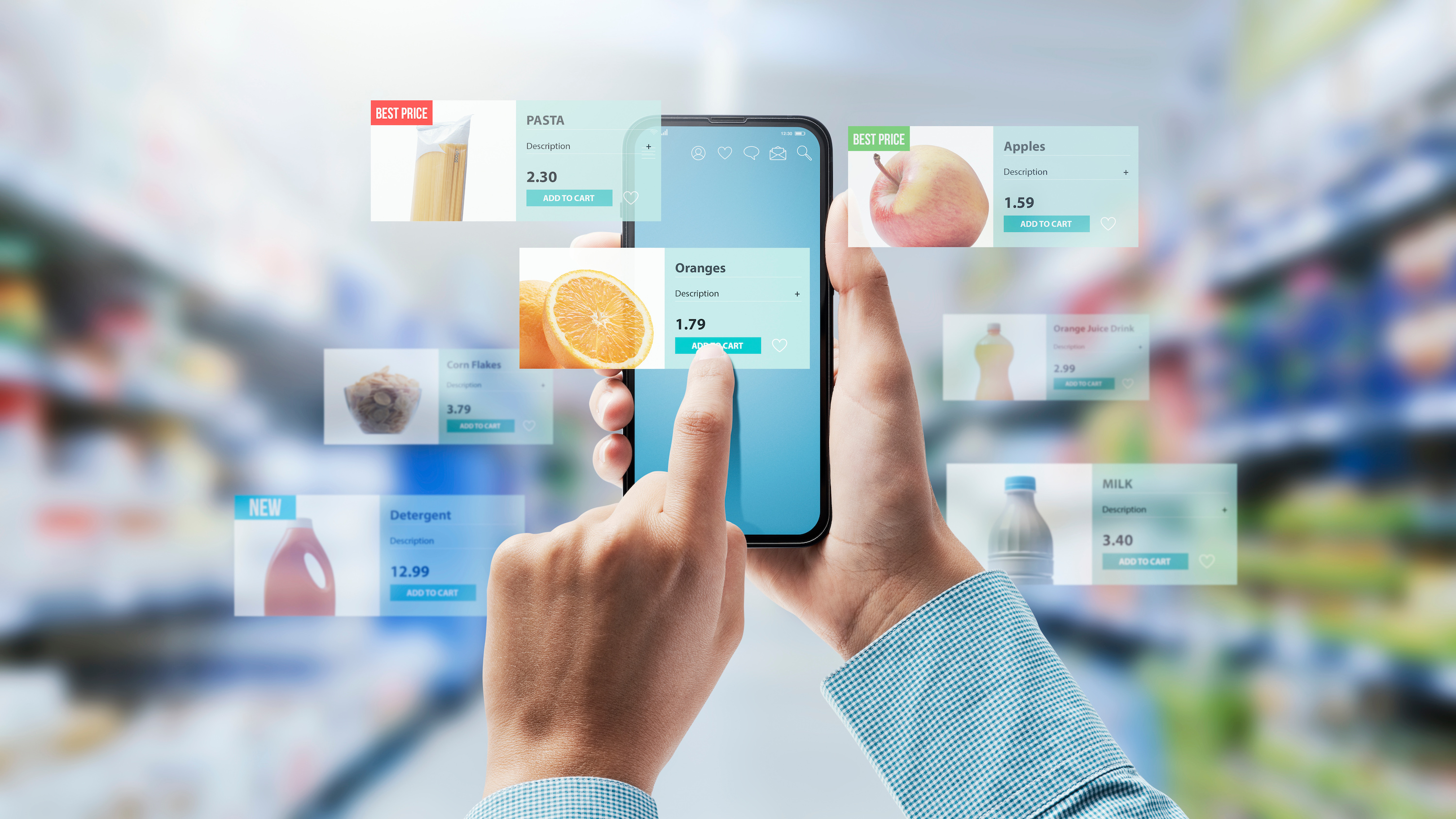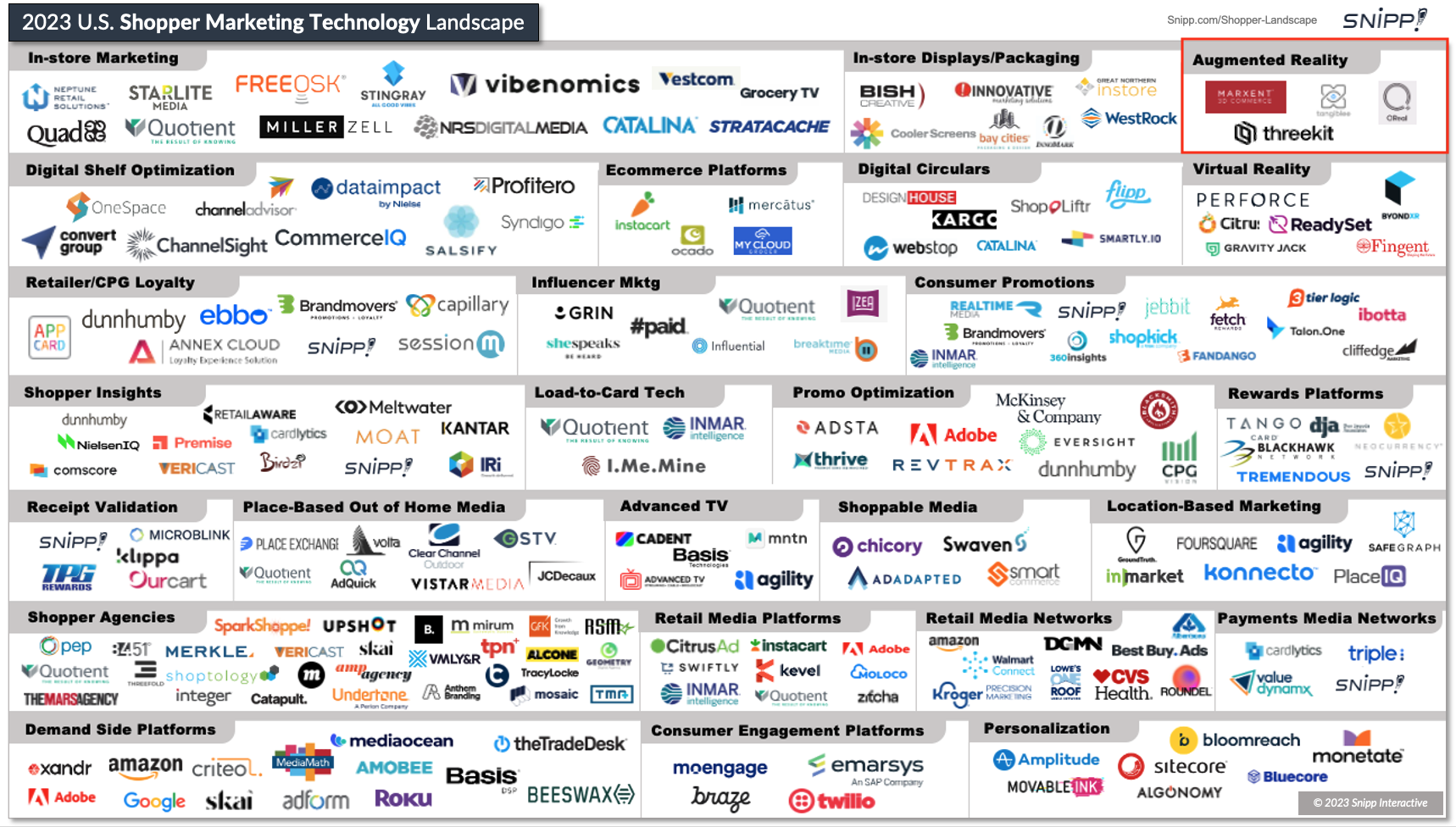Can enhanced AR experiences in-store be used as an effective tool by such diverse retailers and brands like Jeep, Walgreens and 19 Crimes Wines to drive engagement and sales? Many say “yes”, and the technology, consumer demand and financial support is validation. As of 2022, there are 1,033 Augmented Reality startups in the U.S. ready to address an estimated 100 million consumers who used AR to shop in 2020, an estimated 32% of which have used AR for shopping.
What is Augmented Reality (AR)?
Augmented Reality technology enhances or expands real-world experiences, integrating digital information (usually from a smartphone or other digital device) on top of a user’s physical surroundings in real time. Interactive objects are superimposed on top of a physical environment so that the combined image incorporates what the camera sees, augmented with generated visual inputs created via AR technology. Think of the multiplayer game Pokémon Go and you’ve got the gist.
In-store AR Examples
Below are a few examples of how augmented reality is being deployed in physical retail environments to build awareness, drive traffic and enhance the buying experience for shoppers on the go.
19 Crimes Uses AR to Stand Out on the Shelf
One of the biggest challenges for vintners is to stand out on the shelf and differentiate themselves from the sea of competing wines available in most retail settings. Using AR, Australian wine company, 19 Crimes, created a series of animated videos for the wine label which, when scanned with a smartphone, had various English historical criminals portrayed on the labels, giving the viewer a brief glimpse into their crime, punishment, and life after being banished to Australia. The 19 Crimes branding is based on the history of the founding of Australia as an English Penal colony. They recently partnered with Snoop Dogg to release, Cali Red, featuring AR videos of the rap artist.
3D Dragons Drive Mall Foot Traffic
Teen surf and sport clothing retailer Tilly’s Inc. wanted to find new ways to interact with mall shoppers and drive them into their stores. They created an Augmented Reality Storefront in their Ontario California location using a large display installed on an exterior store window that rendered animated 3D dragons, octopus tentacles, floating footwear and a gravity defying skateboarder overlaid on top of images of the actual store interior. Tilly’s claimed foot traffic increased by 30% from the start of the AR window installation. See it live here Tilly's AR Storefront.
Jeep Uses AR to Close Showroom Sales
Driving showroom visits is the key to closing sales for automotive companies. In the past the average consumer visited an average of five dealerships before making a purchase. Now 41% of auto shoppers visit a single dealership, making their decisions ahead of time. To close more sales at the point of sale, Jeep Europe created the “Jeep Compass Visualiser” allowing car buyers to hold an enabled smartphone and view, walk around, look inside and configure a life-sized virtual car. Here’s a link a video showing how it works.
Large Footprint Retailers Use AR for In-Store Navigation
All lost in the supermarket? Retailers with large footprint stores are jumping onboard AR to help shoppers located hard to find items more efficiently and meanwhile deliver pricing and sales information. Walgreens and Lowe’s have teamed up with tech company Aisle 411 to create AR experiences that make the in-store purchasing less time consuming and more productive - potentially driving increased trips and sales in low margin, highly competitive retailers.
There are many other innovators in the Shopper Marketing (as seen in the 2023 Shopper Marketing Tech Landscape) including the companies powering AR experiences for brands and retailers including:
- Marxent Labs who have built room visualizers for kitchen and bath remodeling applications
- ThreeKit who specialize in 3D shopping for furniture and ecommerce
- Tangiblee who create virtual try on applications for jewelry and apparel
- QReal offering various AR applications in fashion, beauty and food
Note: Click to see the full Shopper Marketing Tech Landscape and associated details.
What's the Future of AR for Shopping and Retail?
All eyes will be on AR as a new way to increase engagement, make shopping more comfortable and convenient, and a way to close more sales. As the rise in buying power from a maturing Gen Z population, smarter smartphones and faster data speeds will all contribute to more use cases for AR, and greater opportunities to deliver breakthrough experiences in-store and outside of the store for always-on, digital shoppers who will continually look for ways to merge physical, digital and social worlds into their everyday lives.







